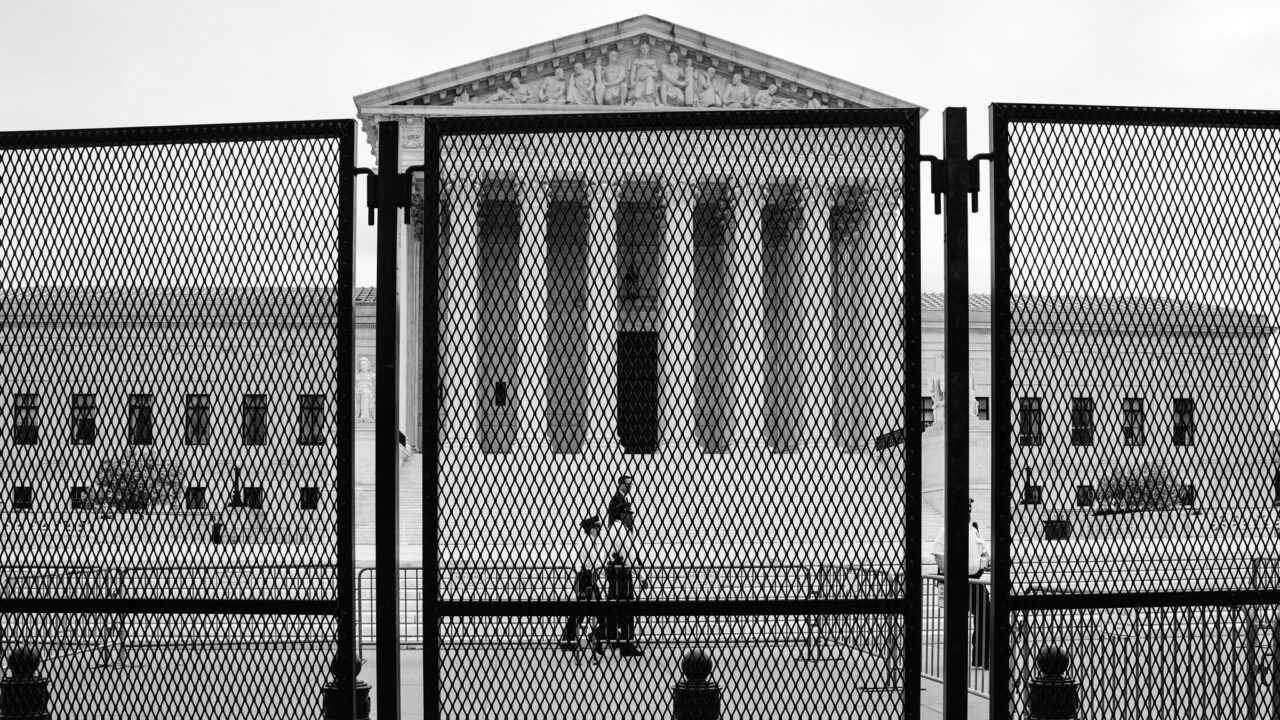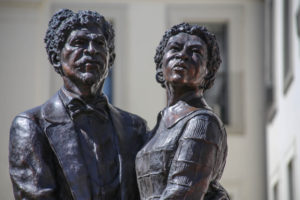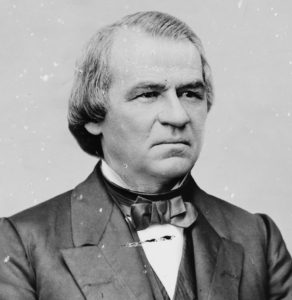The Double-Edged Sword of Judicial Review
What happens when the powers of Judicial Review are wielded by reactionaries? Fencing surrounds the Supreme Court after the release of the draft Alito memo overturning Roe. Photo: Victoria Pickering / CC BY-NC-ND 2.0
This is Part of the "The Supreme Court’s War on the Future" Dig series
Fencing surrounds the Supreme Court after the release of the draft Alito memo overturning Roe. Photo: Victoria Pickering / CC BY-NC-ND 2.0
This is Part of the "The Supreme Court’s War on the Future" Dig series
In and of itself, the power of judicial review is neither good nor bad. Like any other power, it can be wielded to advance or thwart democratic values and the ideals of equal justice. Over the decades, the court has done just that, handing down both deplorable and venerable rulings, some extremely right-wing and some liberal and progressive.
In the most despicable decision in its entire history, Dred Scott v. Sandford (1857), the court held that African Americans, no matter where they resided or whether they were then free or enslaved, could not be American citizens. The decision specifically invalidated the Missouri Compromise of 1820, which had prohibited slavery in the Louisiana territory north of the 36°30′ latitude line.
In the words of Chief Justice Roger Taney, who wrote the majority opinion and was himself a former slave owner, Black Americans “had no rights that the white man was bound to respect.” The Dred Scott decision plunged the country into a constitutional crisis and helped trigger the Civil War.
With the end of Reconstruction, the Supreme Court again moved sharply to the right in the Civil Rights Cases of 1883, a set of five consolidated decisions that struck down portions of the Civil Rights Act of 1875. The 1875 act prohibited racial discrimination in transportation facilities, hotels, theatres and other places of “public amusement.” By a vote of 8-1, the court held that the federal government had no power to outlaw discrimination in the private sector. (Discrimination in employment and places of public accommodation would not be outlawed until passage of the Civil Rights Acts of 1964 and 1968.)
Over the decades, the court has done just that, handing down both deplorable and venerable rulings, some extremely right-wing and some liberal and progressive.
The court struck another crippling blow against racial equality in Plessy v. Ferguson (1896), upholding the constitutionality of a Louisiana law that required separate railroad cars for white and black people. The ruling constitutionalized the doctrine of “separate but equal,” and legitimized segregation and white-supremacy institutions and practices that would persist in the South into the 1950s in what historians call the “Jim Crow” era.
During the late 19th century and into the 20th, the court exercised the power of judicial review to come to the aid of big business, trusts and monopolies, ruling that the federal government had the authority to break up labor strikes, declaring laws setting limits on maximum working hours unconstitutional, and invalidating child-labor and minimum-wage laws.
Continuing its bias in favor of corporations over labor, the court invalidated several key legislative pieces of the early New Deal, stymying the Roosevelt administration’s efforts to fight the Great Depression. It was not until President Franklin Delano Roosevelt announced a plan to expand the court to include as many as 15 justices that the high tribunal turned around. Although legislation to implement the plan never passed, the court subsequently upheld the National Labor Relations and Social Security Acts and other progressive pillars of FDR’s economic recovery package.
Finally, a great sea change in the use of judicial review took place during the tenure of Chief Justice Earl Warren, who led the court from 1953 until his retirement in 1969. In one of the most enlightened and progressive decisions in its history, Brown v. Board of Education (1954), the court unanimously held that state laws establishing racial segregation in public schools are unconstitutional. The decision put a formal end to the post-Civil War segregation doctrine of “separate but equal” and explicitly overturned Plessy v. Ferguson.
Under Warren’s stewardship, the court issued a host of other landmark liberal decisions, upholding the Voting Rights Act, establishing First Amendment protections for newspapers, reporters and publishers against defamation lawsuits brought by public officials and public figures, establishing the reapportionment principle of “one person one vote,” invalidating state laws that banned interracial marriage, guaranteeing the right to counsel in criminal cases, and much more.
Unfortunately, in recent decades, the court has shifted steadily back to the right. The move to the right has been especially acute since the appointment of Chief Justice John Roberts in 2005.
With Roberts at the helm, the court has, among other things, reinterpreted the Second Amendment to include an individual right to bear arms, undermined the legal foundations of union organizing, removed political gerrymandering from the jurisdiction of federal courts, and opened election campaigns to unlimited spending by corporations, unions and wealthy individual donors.
The Roberts court has been particularly aggressive in rolling back voting rights. In 2013, in a 5-4 majority opinion penned by Roberts himself in the case of Shelby County v. Holder, the court gutted the “preclearance provisions” of the Voting Rights Act. Those provisions, now moribund, required advance federal approval of changes in election procedures in jurisdictions with a history of racial discrimination.
The Roberts court has been particularly aggressive in rolling back voting rights.
Shelby County was a stark reminder of the dark side of judicial review, coming only seven years after Congress had reauthorized the Voting Rights Act by a 98-0 vote in the Senate and a 390-33 margin in the House of Representatives.
To be fair, the record of the Roberts Court has included some liberal rulings, especially in the field of gay rights and same-sex marriage.
However, with conservatives now holding a solid 6-3 majority on the court and utilizing the awesome power of judicial review, the future looks decidedly bleak. Indeed, in its October 2021 term, the court returned to its reactionary roots, overturning Roe v. Wade and Planned Parenthood v. Casey and revoking the federal constitutional right to abortion with its decision in Dobbs v. Jackson Women’s Health Organization. The court also created grave new obstacles to gun control with its opinion in New York Rifle & Pistol Ass’n. v. Bruen. The October 2022 term promises to deliver more of the same.
Your support matters…Independent journalism is under threat and overshadowed by heavily funded mainstream media.
You can help level the playing field. Become a member.
Your tax-deductible contribution keeps us digging beneath the headlines to give you thought-provoking, investigative reporting and analysis that unearths what's really happening- without compromise.
Give today to support our courageous, independent journalists.





You need to be a supporter to comment.
There are currently no responses to this article.
Be the first to respond.